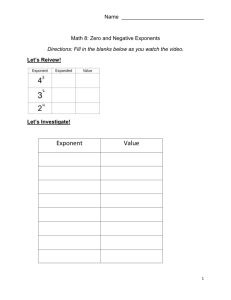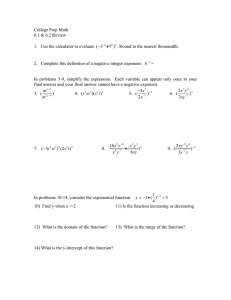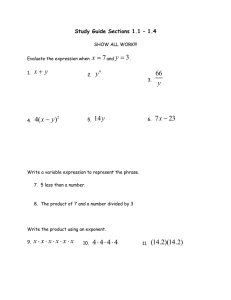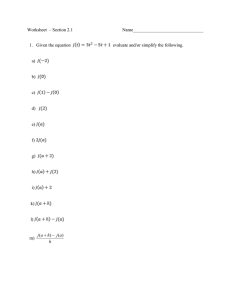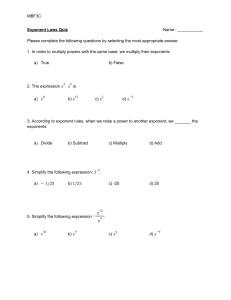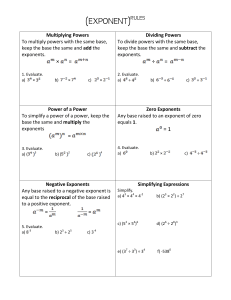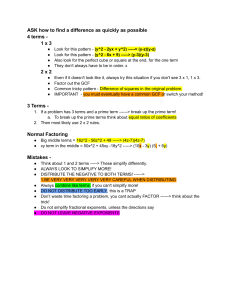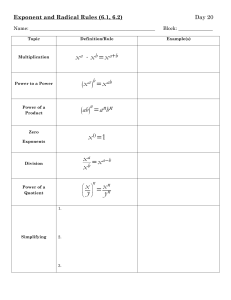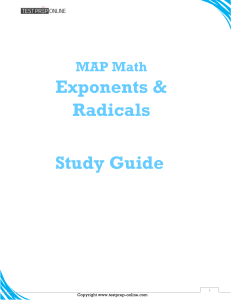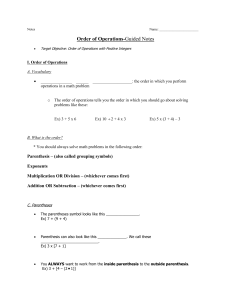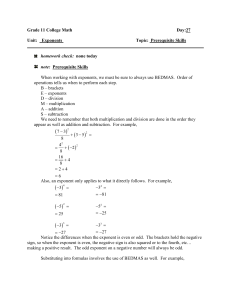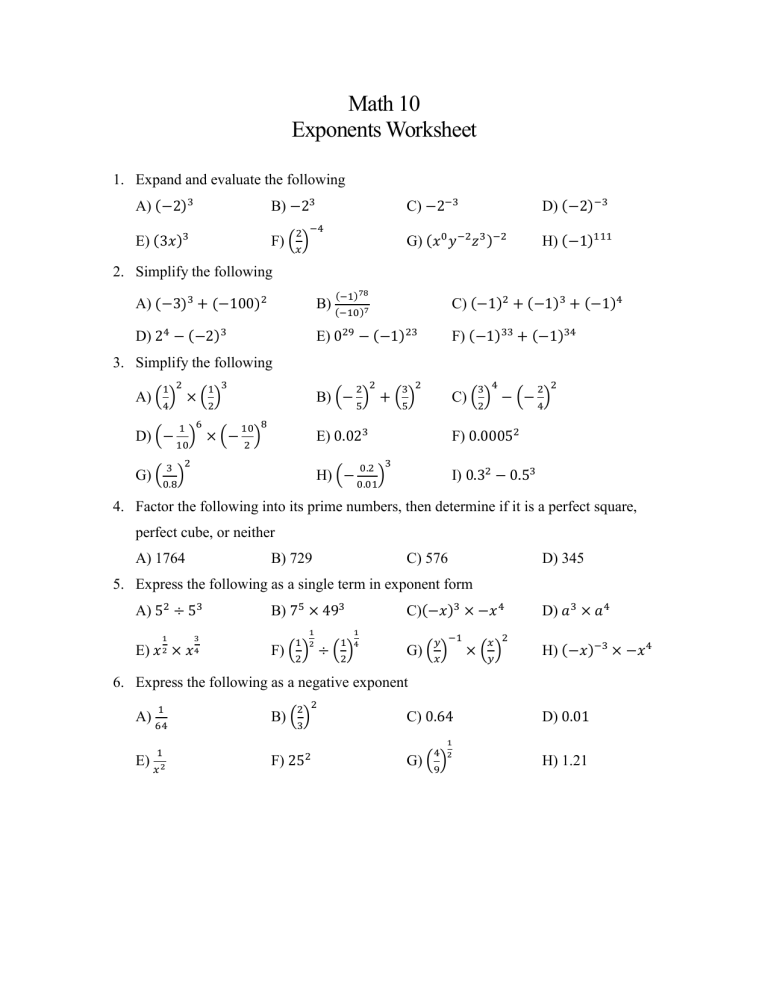
Math 10 Exponents Worksheet 1. Expand and evaluate the following A) (−2)3 B) −23 E) (3𝑥)3 F) (𝑥) 2 −4 C) −2−3 D) (−2)−3 G) (𝑥 0 𝑦 −2 𝑧 3 )−2 H) (−1)111 2. Simplify the following (−1)78 A) (−3)3 + (−100)2 B) (−10)7 C) (−1)2 + (−1)3 + (−1)4 D) 24 − (−2)3 E) 029 − (−1)23 F) (−1)33 + (−1)34 3. Simplify the following 1 2 1 3 2 2 A) (4) × (2) 1 6 10 8 D) (− 10) × (− 2 ) 3 2 3 2 3 4 C) (2) − (− 4) E) 0.023 F) 0.00052 0.2 3 G) (0.8) 2 2 B) (− 5) + (5) I) 0.32 − 0.53 H) (− 0.01) 4. Factor the following into its prime numbers, then determine if it is a perfect square, perfect cube, or neither A) 1764 B) 729 C) 576 D) 345 5. Express the following as a single term in exponent form A) 52 ÷ 53 1 2 E) 𝑥 × 𝑥 3 4 B) 75 × 493 F) C)(−𝑥)3 × −𝑥 4 1 1 1 2 (2) 1 4 (2) ÷ 𝑦 −1 G) (𝑥 ) 𝑥 2 × (𝑦) D) 𝑎3 × 𝑎4 H) (−𝑥)−3 × −𝑥 4 6. Express the following as a negative exponent 1 A) 64 2 2 B) (3) C) 0.64 2 4 2 (9) D) 0.01 1 1 E) 𝑥 2 F) 25 G) H) 1.21
